Three identical polariod sheets P1,P2andP3 are oriented so that the pass axis of P2andP3 are inclined at angles of 60∘and90∘ respectively with the pass axis of p1. A monochromatic source S of unpolarized light of intensity I0 is kept in front of the polaroid sheet P1 as shown in the figure. Determine the intensities of light as observed by the observer at O. When polaroid P3 is rotated with respect to P2 at angles θ=30∘and60∘.

The ray of light passing through polaroid P1 will have intensity reduced by half.
∴ I1=I02
Now, the polaroid P2 is oriented at an angle 60∘ with respect to P1
I2=I1cos260=I02×14=I08
Now, the polaroid P3 is originally oriented at an angle 90 - 60 = 30∘.
Hence, when P3 is rotated by 30∘ , the angle between P2andP3 is 60∘ .
Therefore, the intensity is,
I3=I2cos260=I08cos260=I08×14=I032 ltbgt Similarly, when P3 is rotated by 60∘, the angle between P2andP3 is 90∘.
Therefore, the intensity is,
I'3=I2cos290=I08×0=0

Topper's Solved these Questions
- BOOK - CHHAYA PUBLICATIONCHAPTER - DIFFRACTION AND POLARISATION OF LIGHTEXERCISE - EXAMINATION ARCHIVE WITH SOLUTIONS (NEET)3videos
DIFFRACTION AND POLARISATION OF LIGHT
- BOOK - CHHAYA PUBLICATIONCHAPTER - CURRENT ELECTRICITY EXERCISE - CBSE SCANNER16videos
CURRENT ELECTRICITY
- BOOK - CHHAYA PUBLICATIONCHAPTER - DIGITAL CIRCUITS EXERCISE - CBSE SCANNER6videos
DIGITAL CIRCUITS
Similar Questions
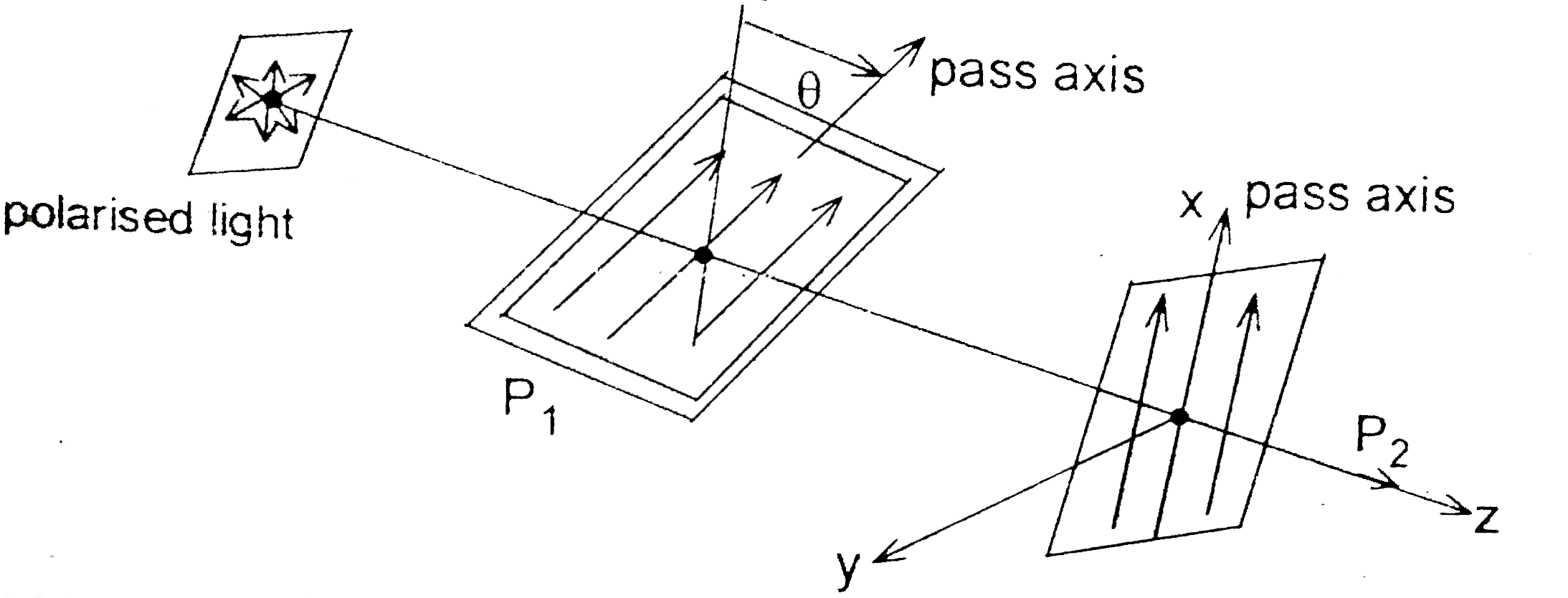
If a polarised light of intensity l0/2 is passed through two polariods P1 and P2 as shown in figure. Then the intensity of light observed by an observer on other side of P2 (if the polaroid P1 is rotated clockwise) as a funtion of angle θ.View SolutionA system of three polarizers P1,P2,P3 is set up such that the pass axis of P3 is crossed with respect to that of P1. The pass axis of P2 is incined at 60∘ to the pass axis of P3. When a beam of unpolarized light of intensity I0 is incident on P1 the intensity of light transmitted by the three polarizes is I.The ratio (I0/I) equals (nearly):
View Solution
Knowledge Check
- Question 1 - Select One

If a polarised light of intensity l0/2 is passed through two polariods P1 and P2 as shown in figure. Then the intensity of light observed by an observer on other side of P2 (if the polaroid P1 is rotated clockwise) as a funtion of angle θ.A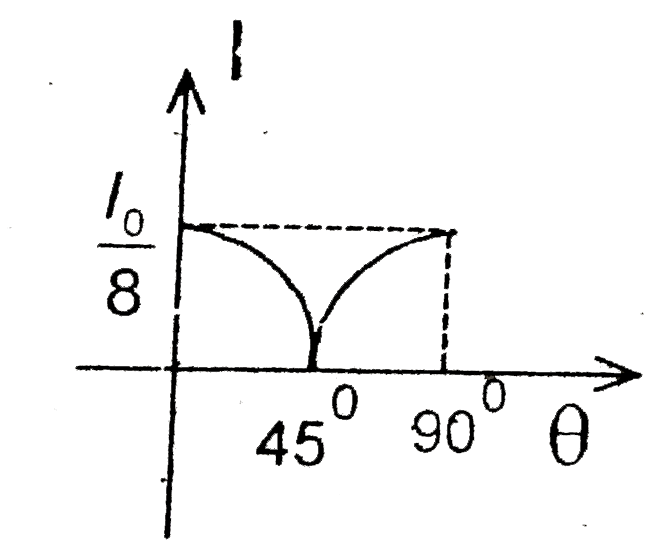 B
B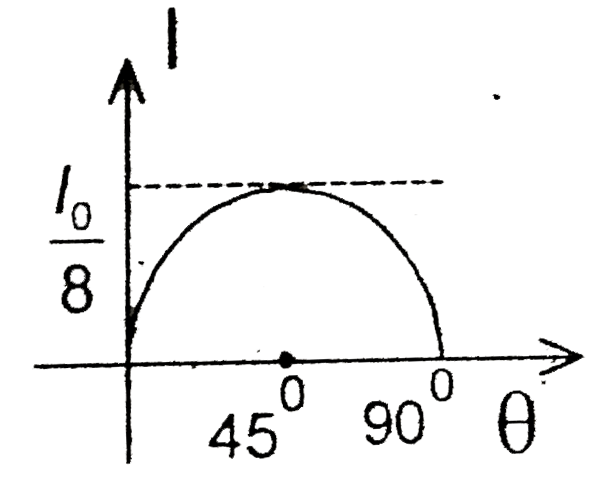 C
C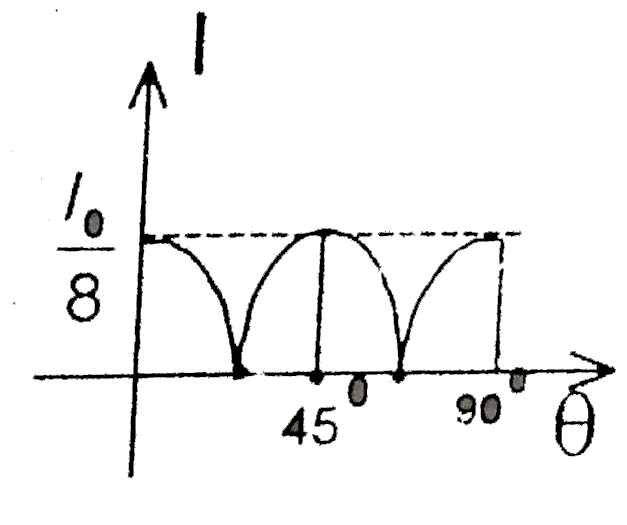 D
D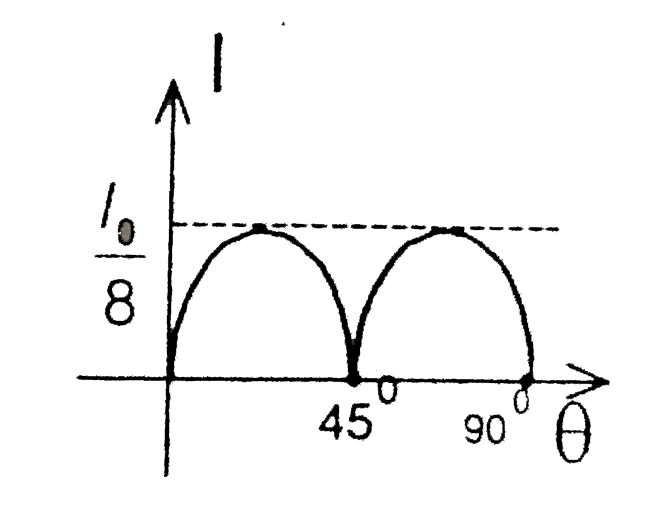
- Question 2 - Select One
Three identical conducting plates P1,P2 and P3 are kept at a distance d from each other. If q,-q,2q are the charges in P1,P2 and P3 respectively, the electric field between P1 and P2 is (where A is area of plate)
A(q2Aε0)B(2q2Aε0)C0D(4q2Aε0)
Two polaroids P1andP2 are set up so that their pass axis are crossed with respect to each other. A third polaroid P3 is now introduced between these two so that its pass axis makes an angle θ with the pass axis of P1.
A beam of unpolarised light of intensity I0 is incident on P1. if the intensity of light, that gets transmitted through the combination of three polaroids, be I find the ratio II0 when θ equals.
(i) 30∘,
(ii) 45∘.View SolutionA system of three polarizers P1,P2,P3 is set up such that pass axis of P3 is crossed with respect to that of P1. The pass axis of P2 is inclined at 60∘ to the pass axis of P3. When a beam of unpolarized light of intensity I0 is incident on P1, the intensity of light transmitted by the three polarizes is I. The ratio (Io/I) equals (nearly) : a) 5.33 b) 16.00 c) 10.67 d) 1.80
View SolutionA narrow beam of unpolarised light of intensity I0 is incident on a polaroid P1. The light transmitted by it is then incident on a second polaroid P2 with its pass axis making an angle of 60∘ to the pass axis of P1. Find intensity of light transmitted by P2.
View SolutionTwo Polaroids, P1andP2 are set-up so that their pass-axis are crossed with respect to each other. A third Polaroids, P3 is now introduced between these two so that its pass-axis makes and angle θ with the pass-axis of P1.
A beam of unpolarised light, of intensity I, is incident on P1. If the intensity of light, that gets transmitted through this combination of three Polaroids is I' find the ratio (I'I) when θ equals.
(i)30∘ (ii)45∘View SolutionTwo polaroids, P1andP2 are set-up so that their pass-axis crossed with respect to each other. A third polaroids, P3 is now introduces between these two so that its pass-axis makes and anlge θ with the pass-axis of P1.
A beam of unpolarised light, of intensity I, is incident on P1. If the intensity of light, that gets transmitted through this combination of three polaroids is I find the ratio (II) when θ equals.
(i)30∘ (ii)45∘View SolutionA narrow beam of unpolarised light of intensity I0 is incident on a polaroid P1. The light transmitted by it is then incident on a second polaroid P2 with its pass axis making an angle of 60∘ to the pass axis of P1. Find intensity of light transmitted by P2.
View Solution
